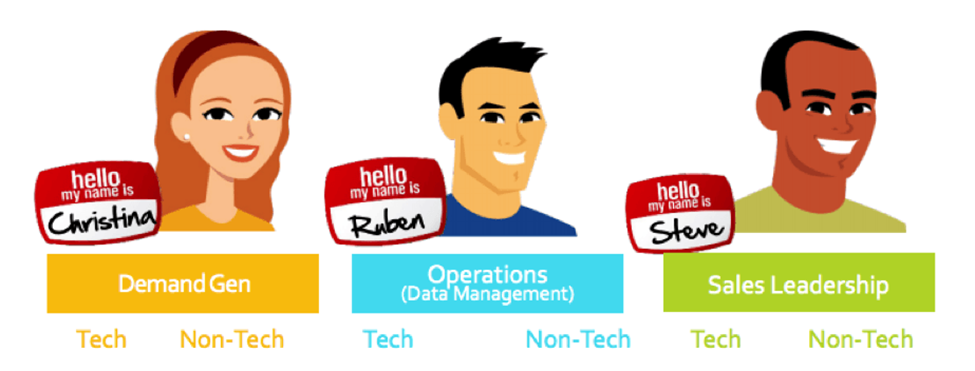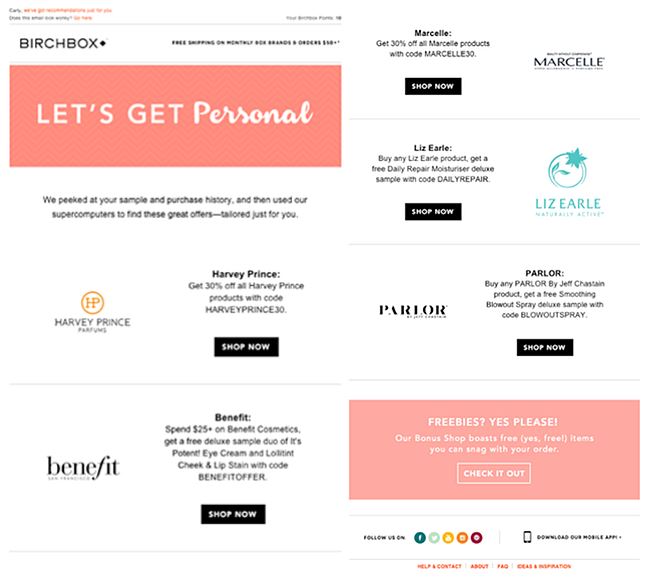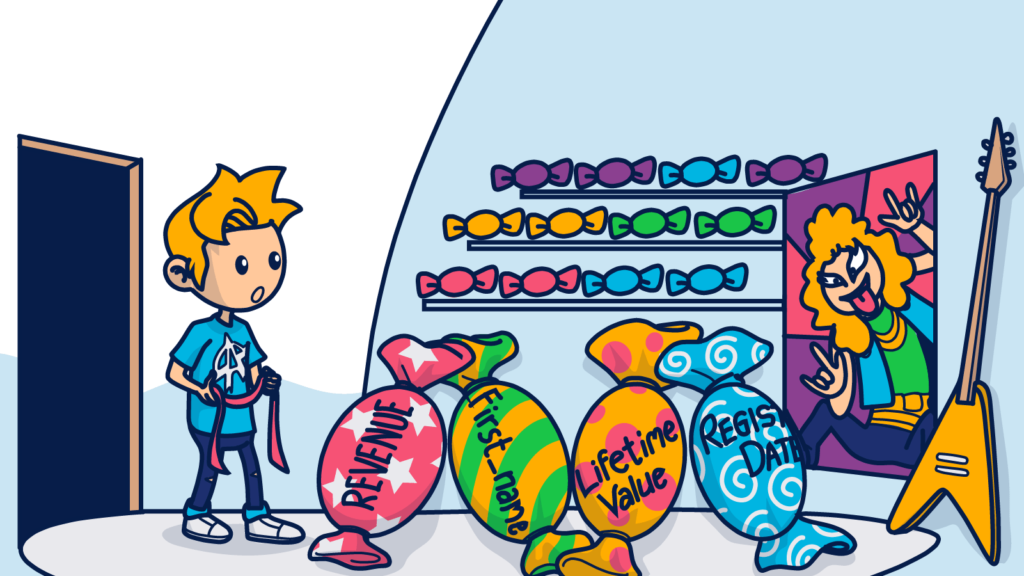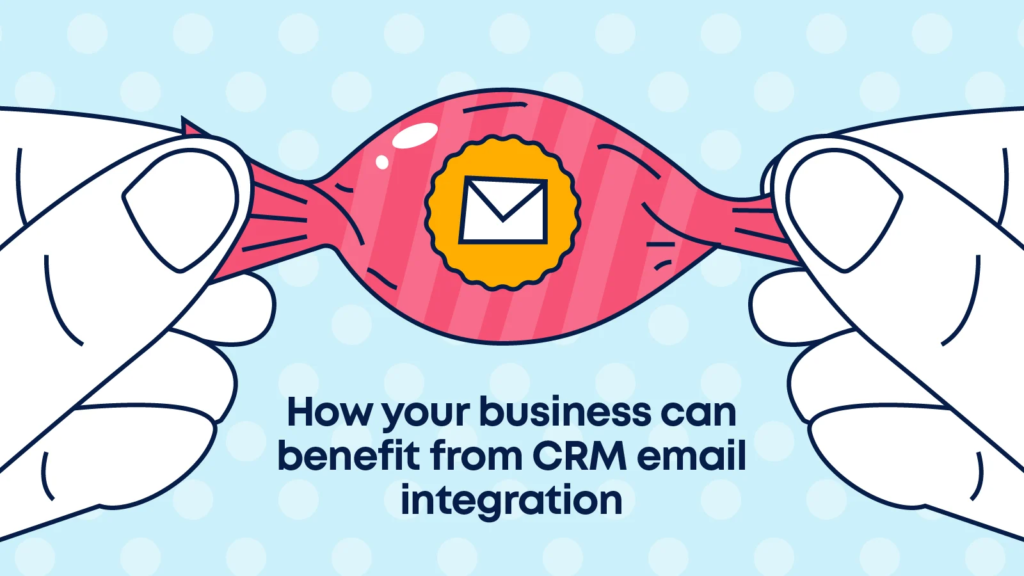If you don’t have a well-oiled CRM-email integration, you’re missing out on user events, real-time behaviors, advanced segmentation, and many more opportunities for profitable engagements. Learn how it makes a difference, and how to make this crucial integration work for you
I remember the first time I set up a fully functional CRM email marketing integration. It felt like everything was possible.
It allowed me to connect every data point, every client activity, every piece of information I had, and I used it to add more value to customers.
When I don’t have this integration in place, I feel like a kid in a birthday party game, trying to find a bowl of candy, while blindfolded.
Sure, friends might yell directions at me – but why rely on the directional data coming at me second hand from my cousins, when I could take off the blindfold and get that data directly?
Integrating your CRM, data warehouse, or CDP for that matter to an email marketing platform does just that.
Suddenly, you can see.
A CRM, that gets updated regularly, is a growth prerequisite for email marketing.
It’s where you start to build your brand’s relationship with customers, it’s where you process their requests, their interactions, and their wishes.
But CRM data storage is just the beginning.
There are two sides to developing strong, loyal relationships with your customers.
First: Managing users and keeping track of their behavior
As its name suggests, your CRM manages your relationship with customers. It tracks user behavior, and you can use the data it gives you to direct your marketing efforts.
Second: Translating this data to communications
In a small room with few obstacles and only a few voices ‘directing’ you, it’s easy to reach the candy.
But, as you scale, you’ll have more incoming data flowing into your CRM, and it will become harder to keep track of your workflows.
What you need is to remove the blindfold to integrate your CRM and your communications strategy into a single, organized, and seamless operation.
When the CRM is able to act as your ‘eyes’, rather than as a jumble of voices shouting at you from a distance, it’s easier to reach out to that customer and get that candy, whatever it may be.

How a CRM integration equips your email marketing operation?
CRMs and email marketing platforms both work with the same audience – just in different ways.
Consolidating them helps you to monitor and communicate with this audience in a much more streamlined manner.
Here are some of the most powerful benefits you’ll get from integrating your CRM with your email marketing platform:
It arms your email operations with data from every channel
If you’re anything like me, you probably semi-cheated at the blindfold game by lowering your eyes to the tiny part of the ground sneaking through the bottom of the blindfold.
This at least lets you see where you were putting your feet.
Similarly, your email marketing platform can track email activity. This is very useful when segmenting and personalizing to optimize your engaged customer segments (more about that later).
However, to really see the full picture you need to know how your audience is behaving on other channels too. You need to see the walls and the furniture as well as the floor.
Integrating your CRM with your email marketing platform will give you cross-channel data which will help you draw that full picture.
- It will arm you with data like website behavior, purchase history, interests, and so on.
- The above will allow you to draw intricate and personalized insights, that will enable you to tailor and personalize your content in a more accurate way.
For example, Netprospex, a B2B sales, and marketing firm saw a 111% increase in their email open rates when they started to segment their users into one of three ‘customer personas’:
Demand Generation, Data Management, and Sales Leadership.

Each of these segmented personas had its own interests, behaviors, and preferences that could be nurtured through differing targeted approaches.
Without data from their CRM, Netrospex wouldn’t be able to create segments and personas as granular and accurate as ‘Christina’, ‘Reuben’, and ‘Steve’.
This will result in increased email open rates and click rates which will subsequently improve your sender reputation, email deliverability, and possibly revenue.
It improves your automation game
When you’re managing, automation is vital for keeping everything running smoothly.
Email marketers who automate processes whenever possible see significant gains in ROI.
But automation without email personalization is pointless.
As we’ve covered above, integrating your CRM with your email marketing platform will give you a wealth of new data. This, in turn, gives you insights that you can use to intensively personalize your email marketing.
When using this data to inform automations, you can program the automation with predefined goals (for example, a purchased item, an abandoned cart, an upgraded plan, etc.)
Once a customer hits one of these goals, the platform will be triggered to deliver an automated message relevant to the customers’ real-time behavior. Usually, this will encourage them to take a specific action (exploring the benefits of their upgraded plan, for example.)
Automation reduces the risk of oversights and enables you to capitalize on opportunities as soon as they pop up.
It empowers your sales team with valuable insights
When your CRM is integrated with your email marketing platform, it becomes your ‘eyes’. Immediately, you get a much fuller and more detailed idea of the path to the ‘candy’.
Your CRM can tell you at a glance how users are interacting with your emails. This helps you to understand their thought processes, deduce their intentions, and gauge how ‘sales-ready’ they are in their journey:
You’ll learn important things about specific customer segments, including:
- The emails they opened.
- The emails they clicked through.
- The specific CTA they clicked.
- The links they pressed. And where they clicked on them.
- When and where they engaged with your emails.
All of this information equips your sales team with valuable data, enabling them to customize their approach to every particular user.
Take this example from BirchBox:
People love “If you like this, you may like…”. When you find a product you love, it’s fantastic to discover that there are a range of complimentary options available.

Your CRM tracks purchasing behavior. With the right analysis, it’s easy to draw insights about purchasing preferences from this data, and send emails to customers with offers based on those insights.
Here’s what I like about this example:
Immediate personalization
“Let’s get personal!” reads the headline, followed by “We peeked at your sample and purchase history…” There’s no beating around the bush here. BirchBox are saying “Hey! We see you! We know you! We want to give you a good experience!”
Clear and easy CTAs
“Shop now”, reads the button, in clear black on white.
There’s a clear focus on what the company wants you to do with the information they sent you.
The flow
The color scheme, the use of graphics, the way the offers are separated. It’s all perfectly constructed to make things as clear and easy as possible for the reader.
Without data drawn from their CRM, the email marketers from BirchBox’s wouldn’t be able to tailor an email like this.
One of Ongage’s clients, 322media described the benefits of combining CRM and email data. In a recent talk we had with them:
“We’re able to go to the segmentation tools and combine a couple of factors for a single email. Some of these would be open rates, CTRs, last time they clicked, how emails were sent.
We’ll combine that info from Ongage with other things we know about that customer from our backend CRM.
That really helps us work with our engagement metrics. So, if a segment has a low engagement rate, we might slow down sends out over a long period of time throughout the day so we’re not getting lost in the email inbox. It gives us different ways of getting in front of them.” – Dan Spellman, Vice President of Marketing & Operations, 322 Media.

All of this helps you to reach your customers in a way that works for them. Especially when combined with our next advantage.
It can serve content, based on real-time data
Helping your email operation with a CRM integration helps you to respond to clients in real-time via transactional emails, i.e., when they perform a predefined action.
It will tell you things like the device they’re using, the time and place from which they’re engaging with your content, and much more.
This enables you to create a contextually relevant experience for them.
Take cart abandonment, for example.
Everyone has, at some point, abandoned a cart. Maybe the impulse cooled as you clicked through to checkout. Maybe you simply forgot that there was anything in there. Maybe you had to quickly close the tab as your boss approached.
70% of shoppers abandon their carts online. But abandoned cart emails help to recover a good 10% of these.
That’s 10% more revenue than you’d get if you weren’t tracking carts and online purchasing behavior with the help of an email-CRM integration.
You can set an automated abandoned cart email for users who added a product to their cart but never finished the checkout process.
Hopefully, you’ll jog their memory, remind them of why they wanted the product in the first place, and usher them through to checkout.
When the data flow between your CRM and email marketing platform is synchronized in real-time, you can send millions of highly-personalized relevant emails from a single campaign.
We’re talking candies, right?

How to make this integration work?
By now, you’re most likely convinced you need to create a two-way connection between your email platform and your CRM.
To make this happen, you’ll need:
- That your email marketing platform features a powerful email API. And,
- A certain level of coding skills.
A robust and flexible API is a must to easily and seamlessly stream data between the two platforms. Without one, creating that bridge can prove tricky. Moreover, if the API isn’t solid, data may take a while to reach each end, and sometimes may even fail to reach the destination.
Development knowledge is also a must. That being said, If you don’t possess these skills yourself, there are other options.
Contact the one on your team and they should be able to get this up and running in a manner of days. Alternatively, you can always find a freelance developer to make this connection for you. In any case, the Ongage Support Team will be there for you in every step of the way.
What’s the alternative?
An Email-CRM integration has, as we have seen, powerful benefits. But there is another option: an all-in-one suite.
As the name implies, all-in-one suites aim to provide you with everything that you need, all in one place.
A typical all-in-one offers both user management and collection of data points, as well as an email marketing solution utilizing these data points.
It’s easy to see the pros of using an all-in-one suite.
- It’s convenient – there’s only one dashboard from which you can manage and coordinate all operations.
- It’s cohesive – different applications are designed to work in tandem with one another.
- It’s capable – from the get-go, it delivers the user management and communication capabilities that you need.
Why reach for the candy, when someone can hand it to you?
But wait! Before you hold your hands out for that sweet candy, there are some serious drawbacks you need to know about.

It costs more in the long run
At first, an all-in-one suite may seem like a more cost-effective solution.
It doesn’t charge you separately for every application because you get them all at once at a friendlier bulk price (what’s not to like?)
This, however, doesn’t work for high volume professional mailers. As your business evolves and your operation grows, you’ll need to add on more features – which quickly becomes expenses.
Sure, at first, it’s great sitting back and having someone handing you candy. But then you have to keep asking every time you want more, and that’s not nearly as convenient or as lucrative as just getting your own candy.
By comparison, the Email/CRM integration solution effectively lets you stuff your face with candy, on your own terms, and without extensive extra costs moving forward.
It’s often a “jack of all trades, master of none” solution
When you want to take communication to the next level by sending out highly-personalized emails, all-in-one suites may not be up to the task.
Imagine that you got a handful of candy, you know that you want the red M&M’s, but all you have is those that came from that one color bag, and it’s yellow to make things worse!
The kind of granular personalization that you need for top-tier email marketing often isn’t possible using the features with which all-in-one suites are equipped.
Integration solutions however are designed to excel at sophisticated specializations. They enable you to dig deep into that candy jar and pick out exactly what you’re looking for.
Combined, the specialized skills of a CRM and an email marketing platform give you the best of both worlds solution which just isn’t possible with an all-in-one suite.
It’s much less flexible
Being handed candy comes with conditions. One of those is that you have to stay in your seat. Needless to say, that’s not ideal.
Everyone wants a system that evolves alongside their business. They want to be able to move around the room, engage with the other kids at the party.
Unfortunately, all-in-one suites don’t offer that kind of flexibility. They struggle to adapt fast enough to keep up with the pace of modern marketing.
It takes time to notice this lack of flexibility (all suites are up to date when new!) But, as time goes by, you’ll notice that certain necessary modifications simply aren’t possible due to limited APIs.
Integrated solutions are flexible enough to avoid this limitation.
This means that system updates like security, patches, and upgrades can be rolled out quickly and easily, without affecting other systems.
Want to test run a CRM email integration?
Obviously, nobody wants to fumble around in the dark while their ‘CRM’ shouts directions at them. Integrating everything into a single solution is by far the best way to find your way to that lovely customer conversion candy.
Both CRM and email marketing are crucial to building and maintaining relationships with customers. When the two work hand in hand, there are powerful benefits to be had:
- Your sales team will be empowered with valuable insights.
- Data-driven personalization will maximize value for your customers.
- You’ll be able to serve up dynamic, customized content based on real-time data.
- Deep, cross-channel insights will enable your automation to work harder and better than before.
Should you make your own way to the candy, and help yourself (integrated solution)? Or have someone hand it to you (all-in-one suit)?
Well, we believe that the flexibility and independence given by the integrated solution is the optimal choice for a business that’s fast-paced and evolving all the time.


















